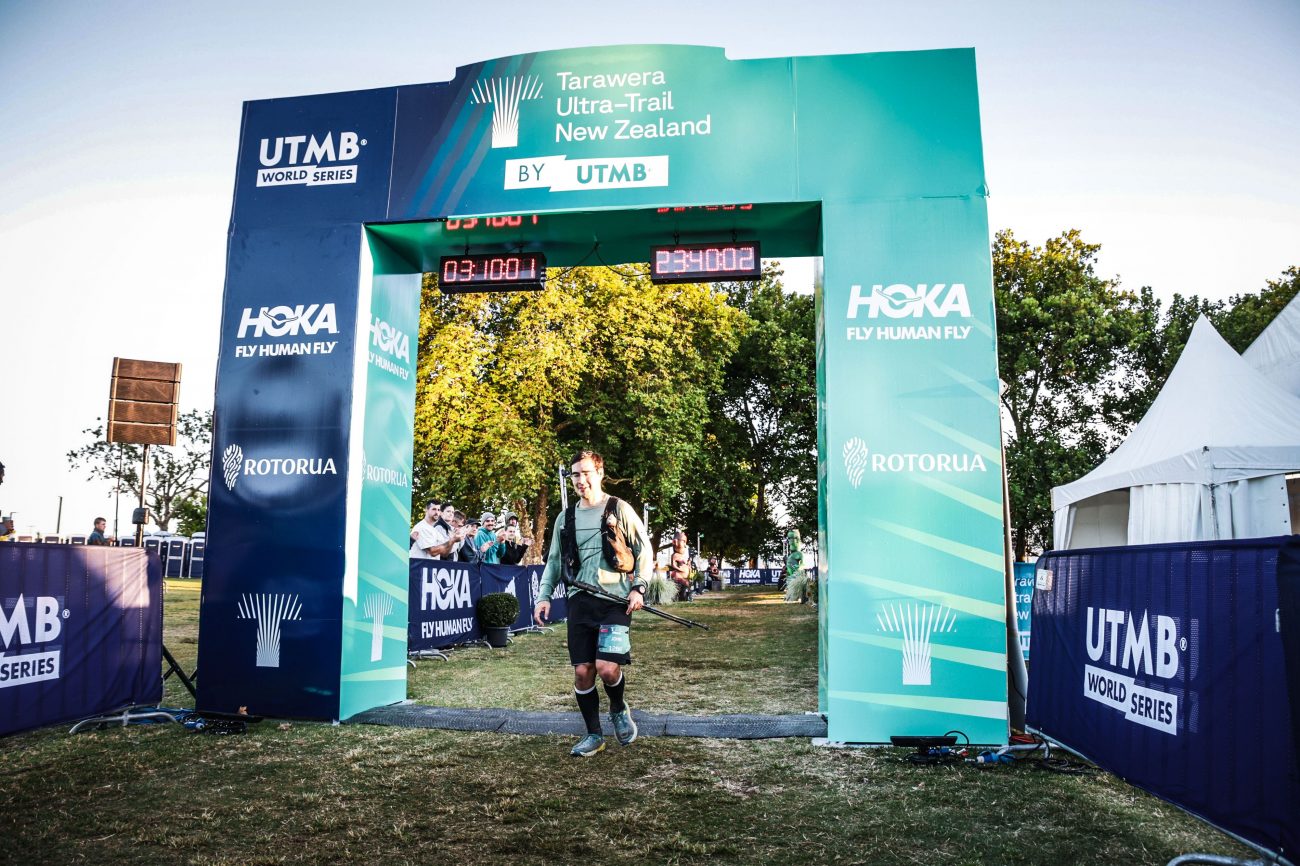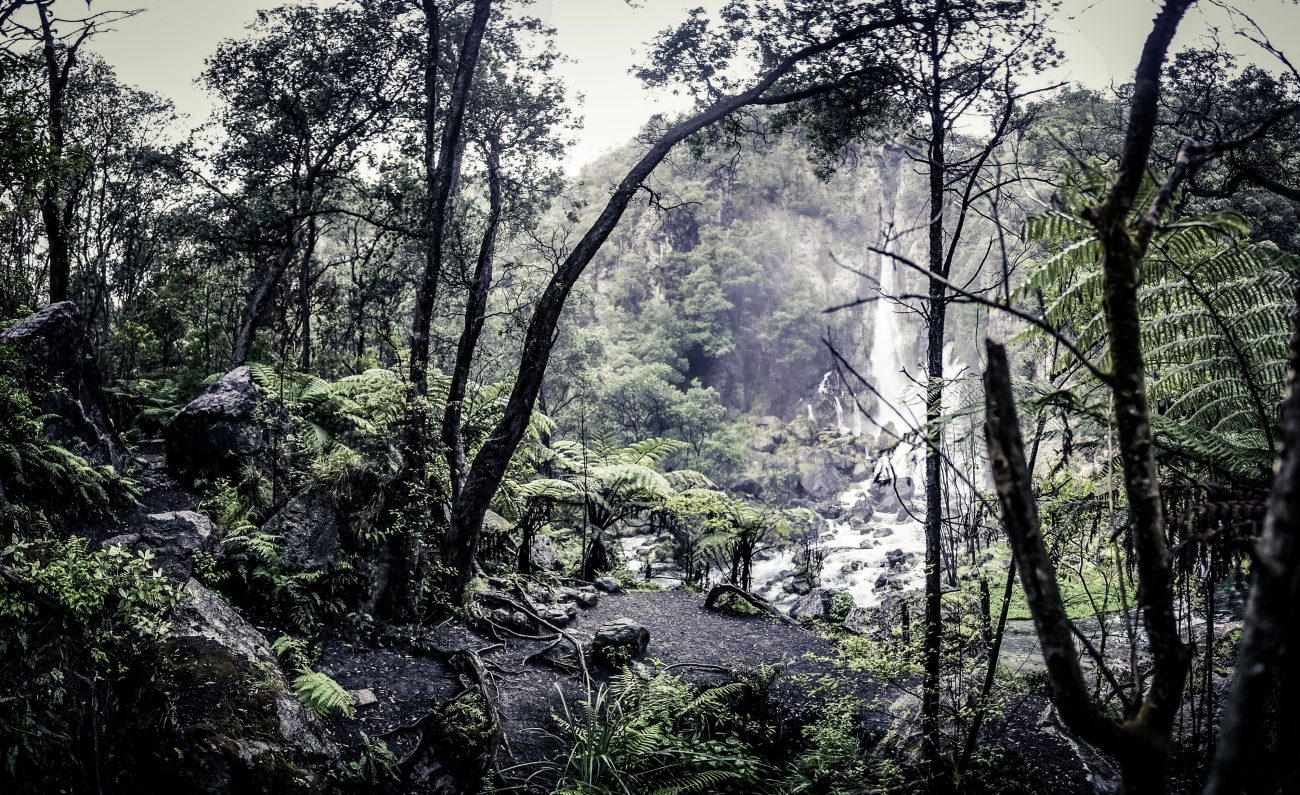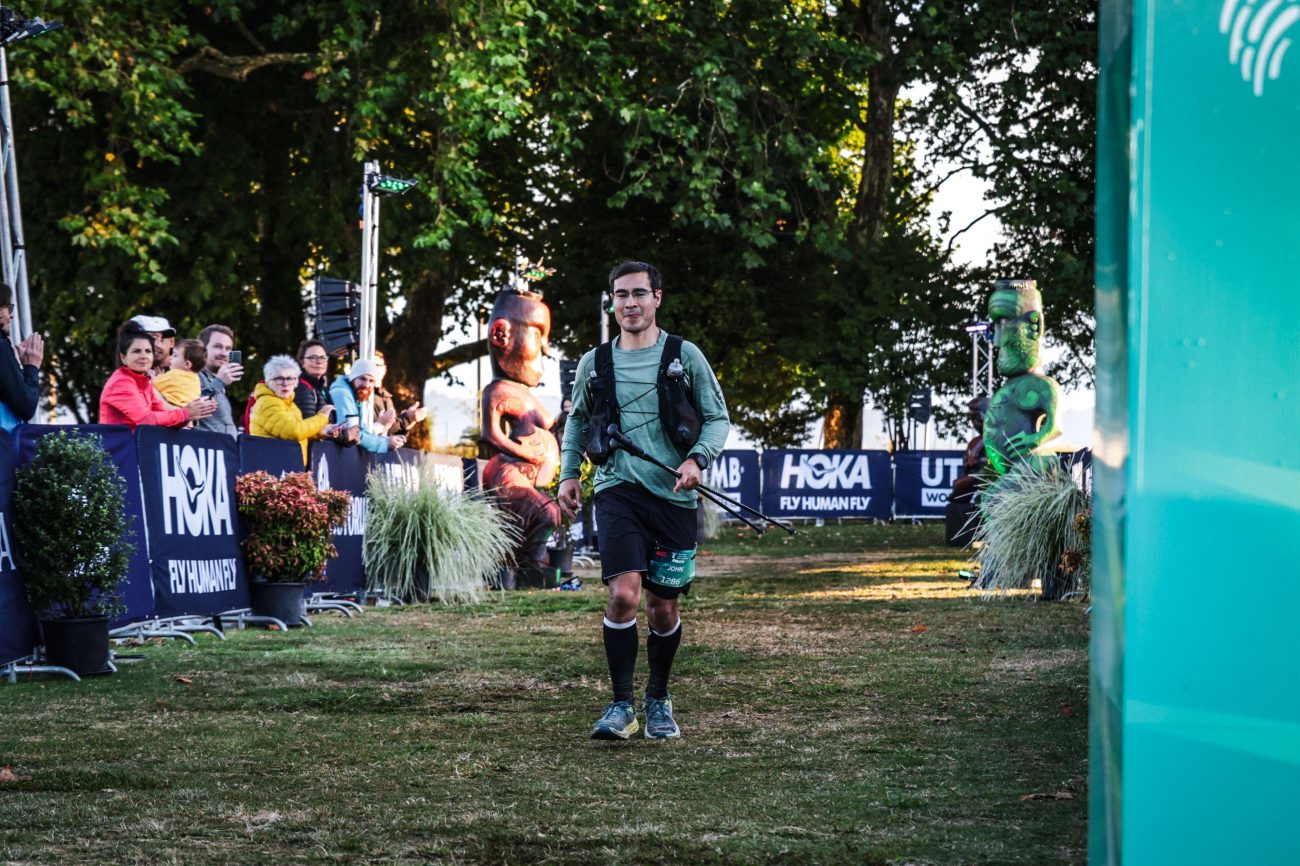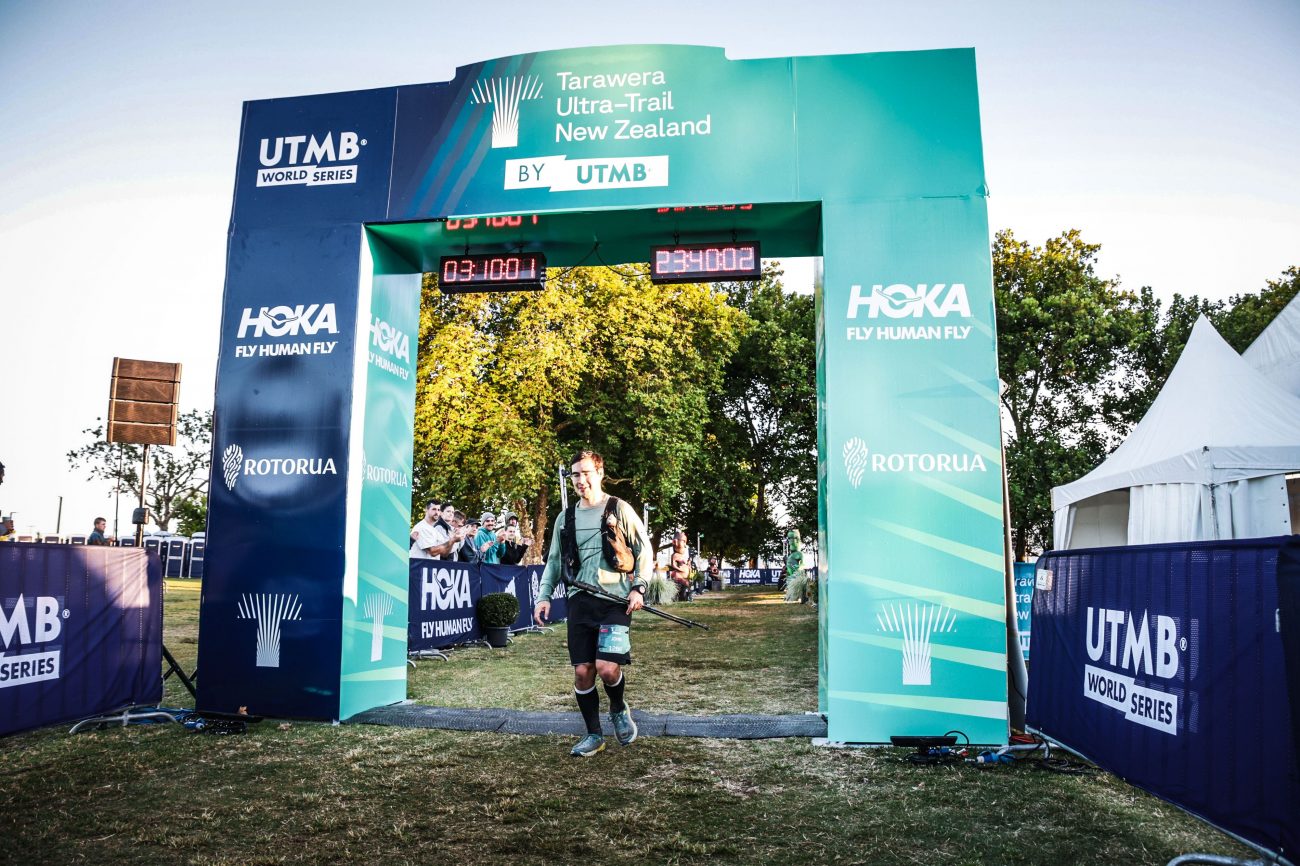
Tarawera 100 Miler (162.5km):
100 Mile # 7
Date:
February 17, 2024The 2024 Tarawera 100 miler (162.5km) was my fourth Tarawera miler and one of my toughest. It was an extra early 2am wake up as the course now started at Kawerau which was about an hour out of Rotorua. Even then, I knew 2am was pushing it for a 4am start but I couldn’t bring myself to waking up any earlier. I’d had a pretty busy week at work and to top it off, I’d developed shingles three days prior. Medical knowledge is a double-edged sword. Whilst it’s good to be able to self-diagnose, I knew that in order to get shingles, you needed to be immunocompromised. Or in non-medical terms – run down. As much as I tried to put a positive spin on things (well at least you’ve trained hard enough), I wasn’t filled with confidence knowing that endurance running can suppress your immune system and my immune system had already bottomed out. Shingles is an itchy painful rash that usually occurs on your torso and is caused by reactivation of the chicken pox virus. It’s more common in those over 50 years, those taking immunosuppressant medication, and in those with immunocompromised conditions. The rash seemed to be worse at night (which made the last 48 hours of sleep challenging) and the anti-viral medication I’d started two days prior wasn’t making much difference. However in my mind, I couldn’t pull out now. I’d done all the training and hard work. Pulling out now would be cruel. I was also reasonably confident that once I starting running, my brain would put the shingles aside and concentrate on the task at hand – running 162km. As my cousin Paul drove me closer to the start line, I felt this sudden electric shock go up my back and Paul noticed me grimace in pain. It was like my shingles was taunting me as I got closer to the start line. I don’t have time for this shit. Stay calm and carry on. We both watched the Maori haka and when it was finished, I moved to the back of the starting pack. At 4am sharp, 450 runners set off into the dark of Kawerau. I knew not all would finish. Would that include me?

At the start line with my cousin Paul (and sole supporter)

Crossing the Tarawera 100 miler start line
I started extra conservatively considering my situation. I knew I had to ease my body into this as starting too fast or hard would freak my brain out. Kind of like the boiling frog effect. The concept being that a frog placed in boiling water will jump out to protect itself. But if you put the frog in a pot of cold water and slowly turn up the heat, it won’t notice the subtle differences and will be boiled alive. Though I had no intentions to die today, the reality was that I’d probably have to simmer in some discomfort for a period of time if I were to survive this. Reassuringly, I had some control over the thermostat but I needed to run smart. And so I started as slow as I could comfortably handle. As light dawned, I’d established my comfortable all day pace (i.e. the pace I could go at all day if I needed to). As predicted, my shingles pain was completely forgotten. My brain was distracted by the increased tension in my legs and focused on the task at hand. The Tarawera Falls also provided a welcome distraction and the river it fed was beautifully clear and reflected the green bush that surrounded it. I arrived at the first major aid station at the Tarawera Outlet (30km) around 4 hours and 30 minutes. I topped up my fluids and coerced a couple of slices of meat lovers pizza down me. I knew that I needed a positive energy balance to get through this so I loaded up on solid foods earlier than usual. The conditions were favourably overcast as we ran through the Kawerau Forest and it remained cloudy as we entered the road section towards Rerewhakaaitu. I made a calculated risk to increase my running intensity to get through this section whilst conditions were favourable knowing that this area was very exposed and a potential heat trap. I arrived at Rerewhakaaitu aid station (65km) around 1.45pm for a total running time of 9 hours and 45 minutes. It was starting to get hot so I sculled down my chilled electrolyte drink. I left Rerewhakaaitu aid station reasonably confident. My pacing was good and my body seemed to be holding together. Everything seemed to be going to plan.

Tarawera Falls in the background
One of the main reasons I enjoy doing 100 milers is that I love being physically and mentally challenged. Whilst we all seek the perfect race, it’s often when things don’t go to plan that we learn the most about ourselves. When things don’t go to plan, I pride myself in being able to problem solve and adapt to the circumstances. Somewhere after Rerewhakaaitu, things suddenly began to unravel. In an ultra, you need a few organ systems to remain functional. The five key organ systems being your cardiorespiratory system (heart & lungs), musculoskeletal (muscles & joints), gastrointestinal (gut), genitourinary (bladder), and your central nervous system (i.e. your brain). There’s something about Tarawera that stresses out my genitourinary system. It struck me in 2021 and low and behold, it was happening again. Just before the boat ride across Lake Rotomahana, the urinary urgency began. I developed a painful urge to void small volumes of urine every few minutes. All of a sudden, my pacing was no longer determined by my heart and muscles, but rather by my bladder. Running became a stop start affair and my ability to hold momentum was lost. I’m sure the cause was multifactorial (increased humidity, heat, > 65 km, underlying medical condition, anti-viral medication, concentrated electrolyte drinks, dehydration) but I needed to find a solution. For the next 4 hours, I somehow managed to keep running around Lake Tarawera whilst stopping to pee every few minutes and attempting to problem solve. A previous experience of bloody urine seemed to respond to paracetamol but paracetamol didn’t seem to work this time. Walking seemed to help and running made it worse. But I wasn’t prepared to walk out the last 90km of a miler. Things seemed to improve when I just drank water. But I eventually ran out of water and had to switch back to my electrolyte drink which only made matters worse again. I eventually postulated that due to multiple factors (but mainly exercising in the heat in a dehydrated state), my concentrated urine was upsetting and irritating my bladder. And it was a vicious cycle. Exercising in the heat meant that most of the fluid I was drinking was being directed to my muscles (to work) and to my peripheries (to help cool down) so whatever fluid that did make it to my bladder was minimal and concentrated at that. Dr Stanley had also warned me that anti-viral medication could cause urinary crystals so this also played on my mind. Jesus, I’m growing a crystal factory down there. I knew that rest and hydration would help but I was stuck between aid stations. I was out of water and my electrolyte drink only seemed to compound matters. It felt like a hopeless situation. I felt like giving up. It became clear that the ‘treatment’ I needed lay at the Buried Village aid station. And I had to enlist all my powers to get there.
When I arrived at the Buried Village aid station (88km) it was 5.45pm and I’d been moving for 13 hours and 45 minutes. However, for the last 4 hours, I’d been in damage control mode. It felt like there was no way I could keep this up for another 70km. By now it felt like a wasp had stung the end of my knob and it hurt to walk. Sadly, it hurt even at rest. Whatever caused the problem in my bladder seemed to have spread to the rest of my plumbing. I desperately looked around for my cousin Paul but he was nowhere in sight. Although supporters where shouting and cheering, I felt like I needed to tell someone close to me that I wasn’t in a good state and felt like giving up. I thought about asking the medics if they had any urinary alkalinisers but I doubted they’d have any. They also seemed busy treating a reclined athlete who looked like a ghost and I was pretty sure that the last thing they wanted to see was someone with a sore dick. For the next 30 minutes, I rested at the aid station and tried to stay positive. Just rest for a bit. It’s getting cooler. Just hang in there. Believe. I took the next best urinary alkaliniser I knew – H2O. I took a 500mL fluid bolus. After a while I took another 500mL. Then I had a cold McDonald’s cheeseburger followed by another 500mL fluid bolus. And then another 500mL. After 2 litres of fluid, I figured that would be enough (also conscious of water intoxication). Surely, rest, a 2L fluid bolus, and cooling temperatures would direct more fluid into my bladder and ‘flush out’ whatever the hell was going on down there. After 30 minutes of rest, I was no longer peeing constantly but I was still sore. At some point I realised that ‘rest’ had served its function. I’d performed the treatment. Now the body just needed time. And the reality was that I had a lot of time. I had 36 hours to complete this thing. I’d never forgive myself if I jumped out of the pot (and probably feel a lot better a few hours later) knowing that others were still simmering away in their heated pots of water. I was in boiling water but I needed to hang in there. And so I left the aid station and all its comforts. I ditched all my electrolyte drinks and left with water only. I attempted a jog but jogging hurt so I started walking again. Just give the body time and keep walking. Going forward is a pace.
As I walked along Tarawera Rd enroute to Millar Rd aid station, the mind games intensified. Although the temperatures were cooling, my pot of water was boiling and life was getting horrible to say the least. As I was walking, runners I’d passed much earlier on in the race began to pass me. Every passing runner inflicted a further psychological blow. Come on, you’ve had a good run. You were bound to DNF one day. Just call Paul and ask him to pick you up. After Millar Rd I was fully aware of the Okataina out and back. I’d done this many times before in the past and knew this was hard enough on fresh legs yet alone after 100km. This weighed on my mind. Maybe if this bladder problem doesn’t get better by Millar Rd, you should just pull out. But lots of people pull out at Millar Rd. If you pull out there, is it because of your medical problem or have you just had enough like every other DNFer? I can’t tell you how many times I said the word “Believe” in that 12km stretch of road but it was a lot. After a while I attempted a very gentle jog and my bladder pain didn’t get any worse. Believe. After a while I had an amazing pain free 30 second pee with clear urine that was bliss at the time. Believe. Many more pees followed but things felt different. It was no longer urinary urge with small volumes but rather an urge to clear much larger volumes like the flood gates had opened. Believe. I happened to come across my wife Courtney who was attempting her first 100km coming inbound from Millar Rd. “John boy, I’ve done 76km!” she shouted. She looked so confident I just knew that she was going to finish. “You’ve got this!” I responded. I had a wee moan about my current situation (excuse the pun) but she didn’t seem to register my concerns. “See you in the morning” she exclaimed. I was absolutely flabbergasted. Here I am dismantling and doubting myself yet Courtney has this absolute confidence that I will finish. See you in the morning. Believe. One of our biggest strengths (but also our biggest hurdle) to completing a 100 miler is our minds. The vast majority of DNFs in ultra endurance races are psychological or related to inadequate preparation/training yet hardly anybody will admit this. Rather we will blame our failures on a ‘medical problem’ (“My leg hurts. My gut hurts”). Trust me, all of us during a miler will have some kind of musculoskeletal, gastrointestinal, or genitourinary problem at some point. All of us are going through hell and want to quit. What matters most is how you control your thoughts during adversity and how you respond to these situations. How much do you want this? Look for the positives. Stay positive. Reframe your thoughts. Adjust your expectations and most importantly believe in yourself. Say it out loud if you need to. Believe.

Courtney participating (and finishing) her first 100km (actually 105km)
When I arrived at Millar Rd aid station (100km) a comparatively slower 2.5 hours later, my bladder problems weren’t gone by any nature. But for the first time in several hours, I could hold a running rhythm and my bladder pain was manageable. And I can do manageable. It still hurt to pee (and for the next 10 minutes afterwards) but I learnt that the bladder pain seemed to improve if I resisted the urge to pee again after voiding. I also took paracetamol regularly. I’ve since learnt that ‘bladder slap’ (a form of bladder trauma seen in long distance runners) can be decreased if the bladder is partially filled and adequate hydration is maintained. I’m sure that this contributed to some my problems. Regardless, I’d reached the 100km mark and I was back in the game. Knowing that I wouldn’t be able to do 60km on water alone (and still traumatised that my electrolyte drinks played some part in this problem), I filled up one of my flasks with Mountain Dew for the needed glucose. I also upped my eating game plan knowing that I had now deprived myself of my regular fluid energy source. As the sun set, I moved swiftly along the Western Okataina Walkway. All of a sudden, I was passing people again. It was also nice to hear words of encouragement from the 100km runners coming the other way which fuelled my drive. I arrived at the Okataina aid station (115km) just before 11pm and was remarkably back on target for a 27 hour finish despite all the adversity. Feeling back in the grove of things, I didn’t stop for long. I topped up my Mountain Dew and water, forced some garlic bread down me, and took off again. The cooler night conditions made for good running and I was back at the Millar Rd aid station (133km) just before 2am. The aid station was remarkably lively and I started singing to the music playing in the background. As the Mountain Dew seemed to be too gassy, I switched to flat coke knowing that the caffeine would also help me get through the night. I also managed to successfully change my battery on my night light which reassured me that my brain was still functioning (this can be a remarkably challenging task after 130km and 22 hours of running though I appreciated the requests to help by the volunteers). The next section of the course (bar a small section of technical rooty single trail leading to Blue Lake) is quite runnable so I made a concerted effort to hold my shuffle. By now, most participants are reduced to walking. A shuffle is much quicker than a walk (for not much more energy expenditure) and helps to keep you psychologically strong. When I arrived at the Blue Lake aid station (145km) just after 4am, my cousin Paul whom I last saw 24 hours earlier was waiting for me! He apologises for missing me at the Buried Village aid station and we have a good chat. We both agree that in hindsight, it was probably a good thing. Sometimes when you’re on the brink of giving up, a familiar face may actually soften your defences and make you want to jump out of the furnace. We run and talk for a bit before I politely ask if he can leave me be so I could problem solve my developing gut ache and concentrate on my breathing. By the time I reached the Redwood aid station (156km), I felt like a pretty broken man. The cumulative stress of everything past and current was starting to overwhelm me again. However, I knew there was no point in stopping and prolonging matters. The only aid I needed was the finish line. I painfully built up to a shuffle again and kept going. As I coursed along Sulphur Point, there was a welcoming orange sunrise. It wasn’t until 2km to go that I KNEW I was going to finish. I crossed the finish line just after 7am for a total time of 27 hours and 9 minutes. Ironically, despite telling myself umpteenth times during the race to believe, I couldn’t believe it when I finished! For long periods it seemed impossible but somehow, I made it. Four hundred and fifty runners started the miler but only 329 runners finished resulting in a 27% DNF rate. No matter how bad the situation seems, don’t stop believing. Don’t jump out of the pot of water too soon. You have a remarkable capacity to do a lot more than you can ever imagine. Just stay in the fight, don’t look for an out, and find a way to finish. Running is medicine.

A satisfying finish line
Helpful tip
What matters most is how you control your thoughts during adversity and how you respond to these situations.
All done in 27 hours and 9 minutes
